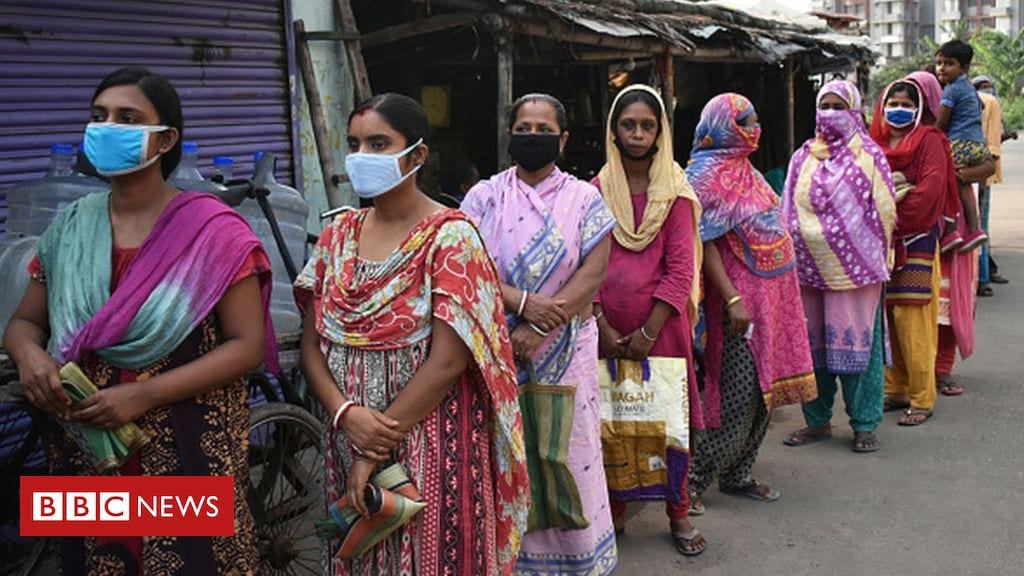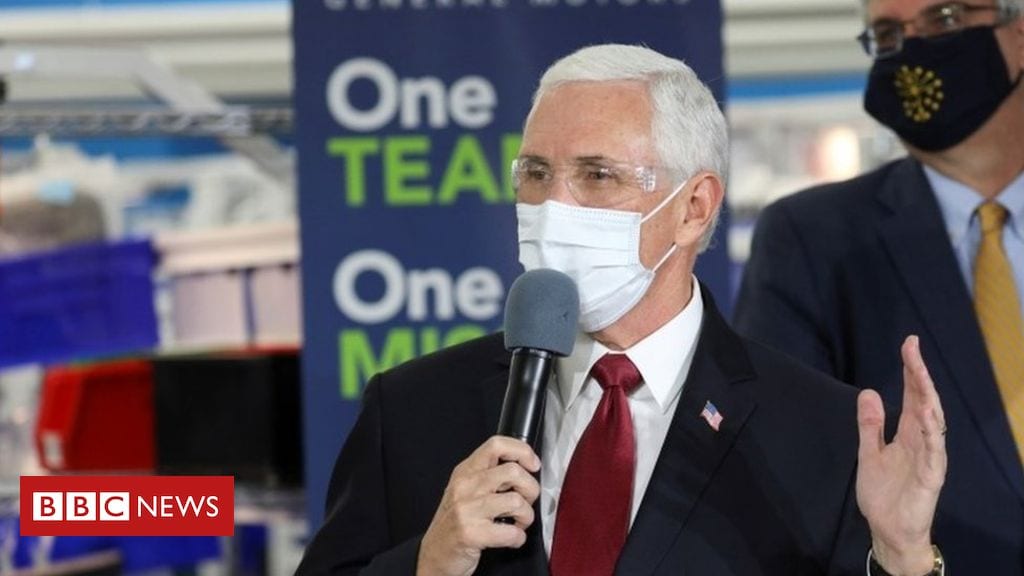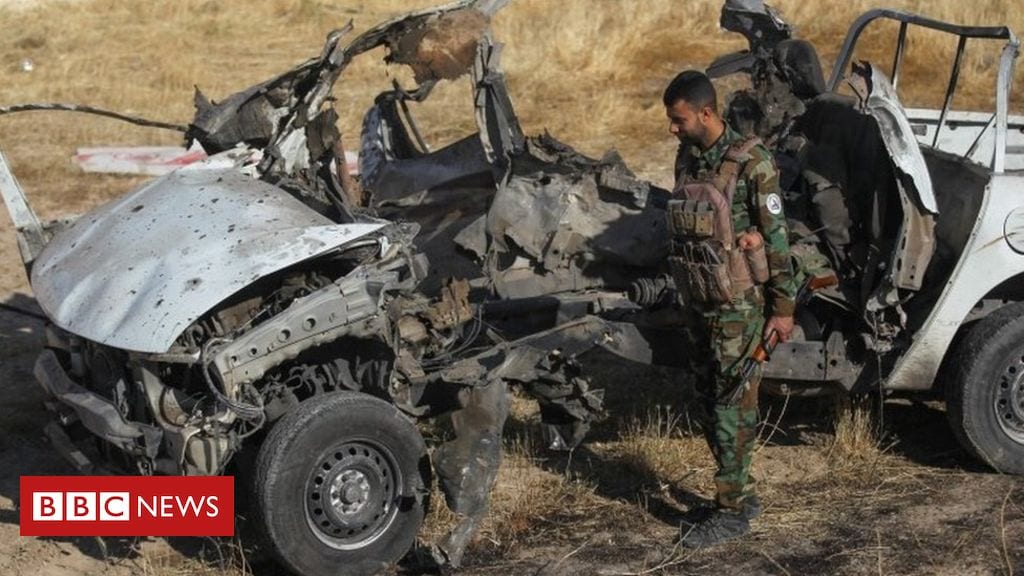[ad_1]

Media playback is unsupported on your device
The video shows a mortuary worker at a cemetery surrounded by dozens of bodies.
Some are wrapped in white shrouds – he says those were ‘done’ in the morning. Then he shows us rows of black body bags lined up unceremoniously on the floor and waiting to be prepared for burial.
After this, he takes his camera phone into another room and then another. The same grim situation – body after body, laid out on the ground in some kind of macabre queue.
The video was filmed in the main cemetery in Qom, a holy city in central Iran. It was where coronavirus first began spreading in the country.
In the footage, the mortuary worker says all the bodies are of victims of coronavirus, though the BBC cannot verify his claims.
But it’s what he says next that captured the internet’s attention. In a passing comment, he explains that some of the corpses had been in the morgue for five or six days.
The footage, and his comments, hinted at a wider truth: Iran was struggling to cope with the sheer number of people that had died, which could be far higher than it has acknowledged.
Since the video surfaced on 2 March and promptly went viral, the response of Iranian authorities to the film has given a glimpse into how the country is fighting to control the narrative around coronavirus.
The context to the video
No other country in the Middle East has been hit as hard by Covid-19 as Iran.
It’s notoriously difficult to get accurate information out of the country, but many online posts suggest the country’s mortuaries are indeed overwhelmed.
This is partly because many of the professional body washers have reportedly refused to cleanse Covid-19 victims over fears they could catch the virus from the corpses.
Image copyright
Instagram
Mashhad seminary students wash bodies in their lunch hours.
Instead, at some mortuaries, this task of washing the dead in line with Islamic tradition falls to volunteers – usually seminary students.
While it’s not thought that coronavirus can be contracted from the dead, the World Health Organization advises people to take an “abundance of caution”, because so much is unknown about the virus
In Italy, for example, health authorities say that although the virus cannot be transmitted posthumously, it can still survive on clothes – so corpses there are being sealed away immediately and it’s forbidden for families to visit the bodies of their loved ones.
How Iranian authorities reacted
After the mortuary footage went viral, hardliners were quick to react. The man who filmed it was arrested, and then authorities turned their attention to reassuring the public all bodies were being treated with respect and in keeping with Islam.
According to Sharia law, loved ones must be buried soon after passing away. Before that though the corpse must be cleansed with water three times, a process called Ghosl-e Meyyet.
And at the beginning of March, Iran’s Supreme Leader, the Ayatollah Khamenei, declared that the bodies of Covid-19 victims must be treated exactly like anyone else; cleansed, wrapped in burial shrouds and the regular prayer for the dead must be performed for them.
Image copyright
Hawzah News Agency
Writing on the Corona Ladies’ backs says “If you don’t have the courage of a lion, you cannot undertake the journey of love”
To quell anger that the viral footage provoked, hardline websites began focusing on one group of morgue volunteers in particular.
Known as the Corona Ladies, they are a group of female volunteers, also in Qom. Coverage portrayed them as brave women committed to giving the dead the Islamic last rite, despite the possible risks to their health.
They are made up of three teams each working seven-hour shifts to keep up with the demand, and repeat religious invocations and chants to help them through their work. They say that when they wash the corpses of young people, they cry these out louder to help steel themselves for the task ahead.
A slogan written on their backs reads: “If you don’t have the courage of a lion, you cannot undertake the journey of love.”
With hospitals overrun and mortuaries reportedly struggling to cope, the government is facing uncomfortable questions about whether that crisis is worse than it has made out.
How bad is coronavirus in Iran?
According to official government statistics, more than 60,000 people in Iran have contracted the virus and about 4,000 have died. But a group of Iranian researchers in the US believes the real figures to be much, much higher.
Rather than relying just on Iranian government statistics, the researchers, from the Massachusetts Institute of Technology and Virginia Tech, developed a model that simulates the spread of the disease. It uses data on infected Iranian travellers who tested positive at the point of entry to other countries, as well as numerous medical community estimates, to calculate what they say is a more accurate figure.
They estimated that, as of 20 March, more than 15,000 people had lost their lives and the number of infections could actually have been closer to one million. That is 10 times the official figures, which by that day was 1,433 deaths and just under 20,000 confirmed cases.
Image copyright
Mehr news agency
A worker covers the graves of coronavirus victims with lime.
We may never know the true extent of the crisis in Iran, but the signs of its scale are being dug into the earth.
In some cases, the bodies of multiple victims are, instead of being put in individual graves, being placed side by side in long trench-like burial sites – unheard of in this part of the world.
A doctor from the Mazandaran region of northern Iran, who didn’t want to be identified, told the BBC that public safety experts had been dispatched to monitor the process of enshrouding, burying and covering the graves with lime, which officials say is used to help disinfect bodies and prevent the spread of the virus.
The doctor said that despite victims’ death certificates stating cardiac arrest or the flu as the cause of death, the fact these experts had been dispatched indicated that the cause of death was in fact Covid-19.
Meanwhile, a number of families say they have no information about the whereabouts of their loved ones’ bodies. They have been told this will be communicated to them once the crisis is over so they can go to visit the graves of those they have lost.
But in the meantime, religious figures are trying to reassure relatives that their loved ones are being treated with respect and are being buried in line with all the correct Islamic rites.



















